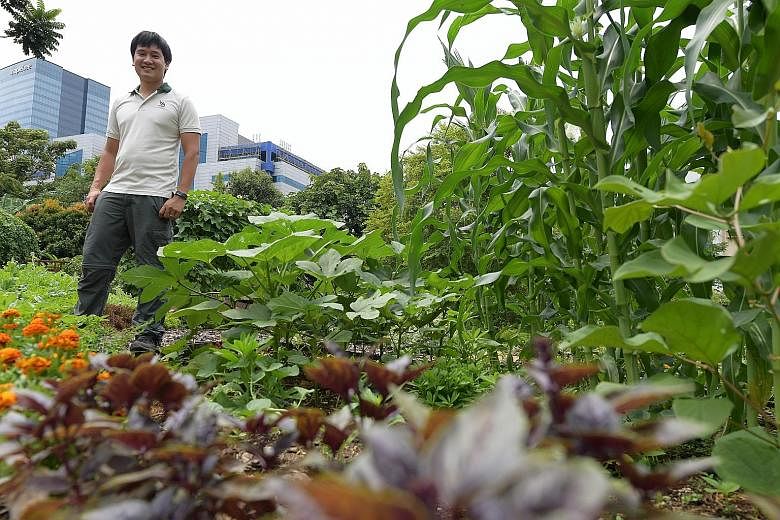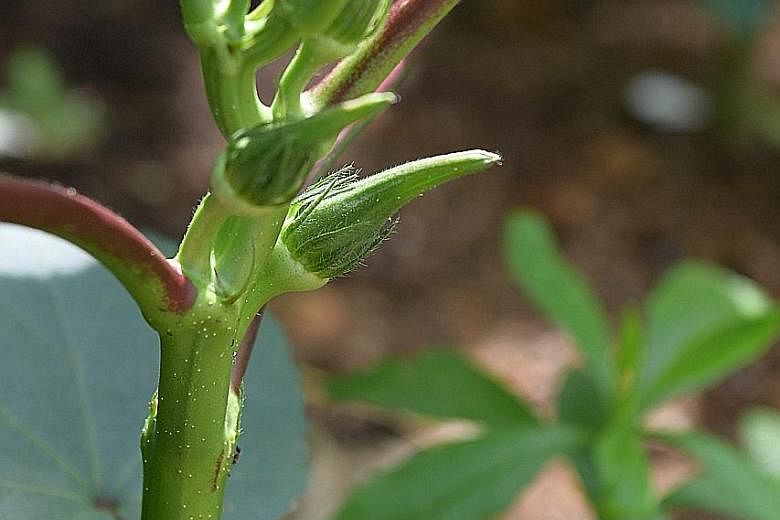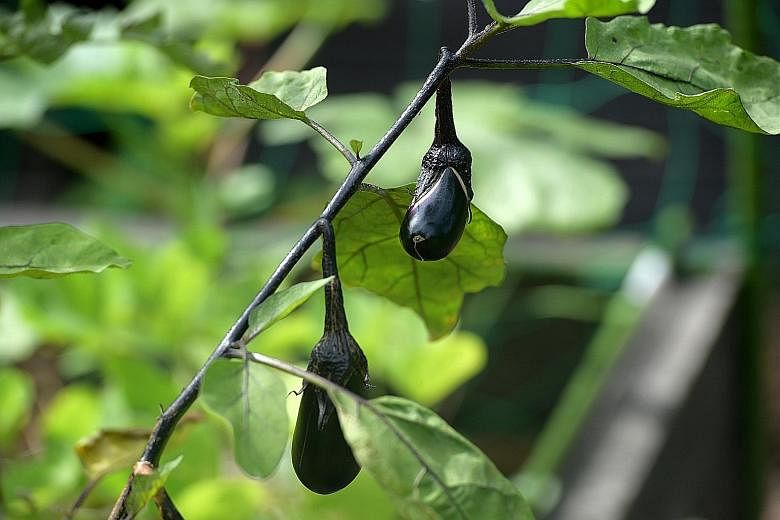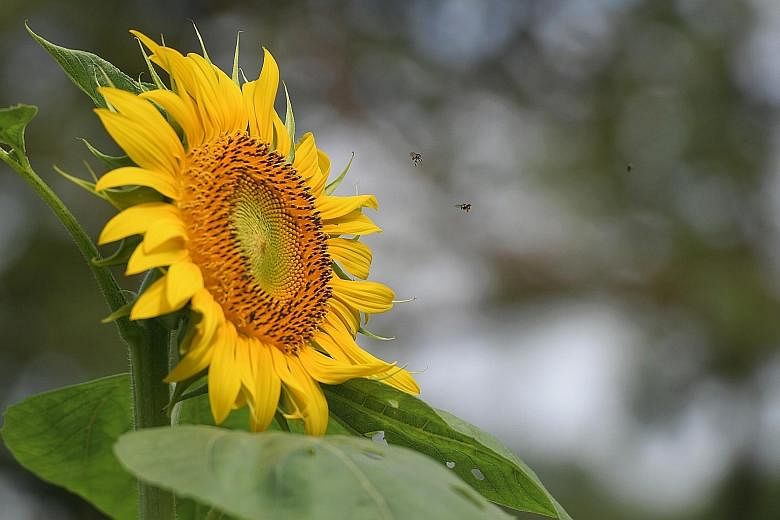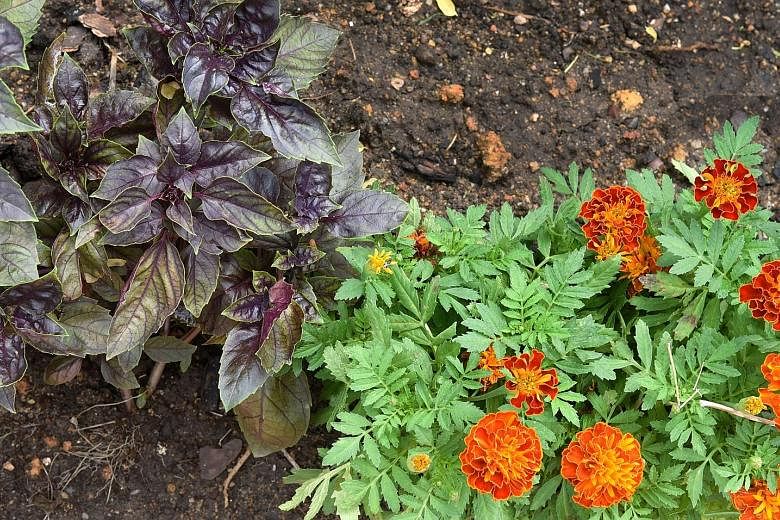Growing your own food may seem a mentally relaxing pursuit, but throw companion planting into the mix, and it becomes a grand game of strategy.
Companion planting is a method of gardening where different species of plants are grown close together so that they benefit from each other's unique characteristics.
One can either grow a main crop with several supporting plants, or several main crops which support each other. This can be done either in a gardening plot or with several different potted plants in a Housing Board flat.
Speaking at HortPark, where he practises the companion planting method, manager Benjamin Ang describes the process.
For instance, a gardener could select a tomato as his main crop. Then an entire support system grows around it.
He would want to plant a pollinator-attracting crop on the boundaries of the plot, such as sunflowers. This will attract beneficial insects like bees and parasitic wasps to the plants, while also providing an area under which creatures such as earthworms can survive when the rest of the plot is being tilled.
Afterwards, a pest-deterrence crop must be planted in order to keep disease bearers away from the tomatoes.
-
Busting common gardening myths
-
Manager at HortPark Benjamin Ang, 28, and urban farmer Bjorn Low, 36, tell The Straits Times about common garden myths.
Myth 1: We should not use fertilisers
Mr Ang: Singaporeans tend to want to save money, and try not to spend on fertilisers. However, they definitely need to be used because plants require the nutrients to grow.
I use chemical fertilisers.
When it comes to organic or chemical fertilisers, there is no molecular difference between the two.
Furthermore, the concentration of nutrients in organic fertilisers is lower than in chemical fertilisers.
However, I am cautious about chemical pesticides because they are synthesised to disrupt the hormonal balance in insects, and they will affect us if we consume them in large enough amounts.
Myth 2: We should water plants every day
Mr Ang: Soil needs to dry out. If your soil never dries out, air - and therefore oxygen - would not go back in and the soil will begin to degrade. I would not recommend watering more than three times a week with outdoor plants.
When it comes to potted plants, it gets a bit tricky because the ratio between soil amount and plant size changes as the plant grows.
But the main thing to keep in mind is that the soil needs to dry out. Mr Low: Visually, it is quite hard to determine if the soil is wet or not.
The easiest thing to do is the small pinky test. If you are in doubt, just stick your finger in the soil. If the soil is moist or quite damp, do not water it. If it is dry, then water it.
Myth 3: We should completely eradicate pests from the garden
Mr Ang: A lot of people may fuss over a small number of pests, but they are not necessarily an issue. Control is more important than eradication. Mr Low: We need some pests in the garden to attract the beneficial insects.
For example, ladybird larvae are very aggressive against aphids.
If there are no aphids present in a garden, then there will be no ladybirds, which can protect your garden. It is always good to have a balance.
The marigold flower, for instance, releases a nematicide that kills parasitic worms in the soil, while the scent of basil deters pests.
A trapper, or "sacrificial", crop can then be planted near the tomatoes to detect if pests are becoming a problem. The common sacrificial crop for tomatoes are brinjals, which pests are more attracted to.
The gardener can then monitor if pests are becoming an issue in his plot before taking necessary action against them.
When the tomatoes have been harvested, a cover crop can then be grown to add nutrients into the soil.
Sorghum, for example, has roots that penetrate deep into the earth and draw nutrients upwards. All one has to do is to cut the sorghum after two months and let it decompose on the plot to release nutrients into the ground.
Mr Ang said one practice that should go hand in hand with companion planting is rotating the main crop. "For example, after your first corn harvest you will have corn pathogens all waiting in the plot for the next batch. But if you grow pumpkins, it lets the corn pathogens go down to the baseline level."
The pathogens that target corn, he explained, are highly unlikely to attack pumpkins.
Mr Ang said that the gardener should switch between three to four different families of crops. In Singapore, cycling between corn, melons, peanuts and okra will last only about one year.
It may sound complicated, and indeed the potential combinations increase dramatically with each new plant added into the mix.
Mr Ang tends to a plot with seven different plants, for instance.
However, companion planting is not that complex, he said reassuringly. "Just two plants, such as tomato and basil, are enough. You can take small steps."
Companion planting is not well practised in Singapore, noted Mr Ang, but there are many benefits to it.
These include a better control of pests, a more varied harvest and removing the need for trellises if a main crop like lady's fingers is planted, for example, because it grows straight up.
Asked about the detriments to companion planting, Mr Ang paused for a moment, before replying: "There really aren't any.
"You take a hit on your yield because the amount of space to grow the main crop is less, and it's more intensive... But these are mere inconveniences."
Urban farmer Bjorn Low, 36, said that he employs companion planting, and that he thinks it is not as well practised in Singapore because resource materials available are based on plant combinations for temperate climates. However, he would like to see more of it here.
"Companion planting is definitely a good thing because gardens can be more productive when planted correctly with the right plants."
